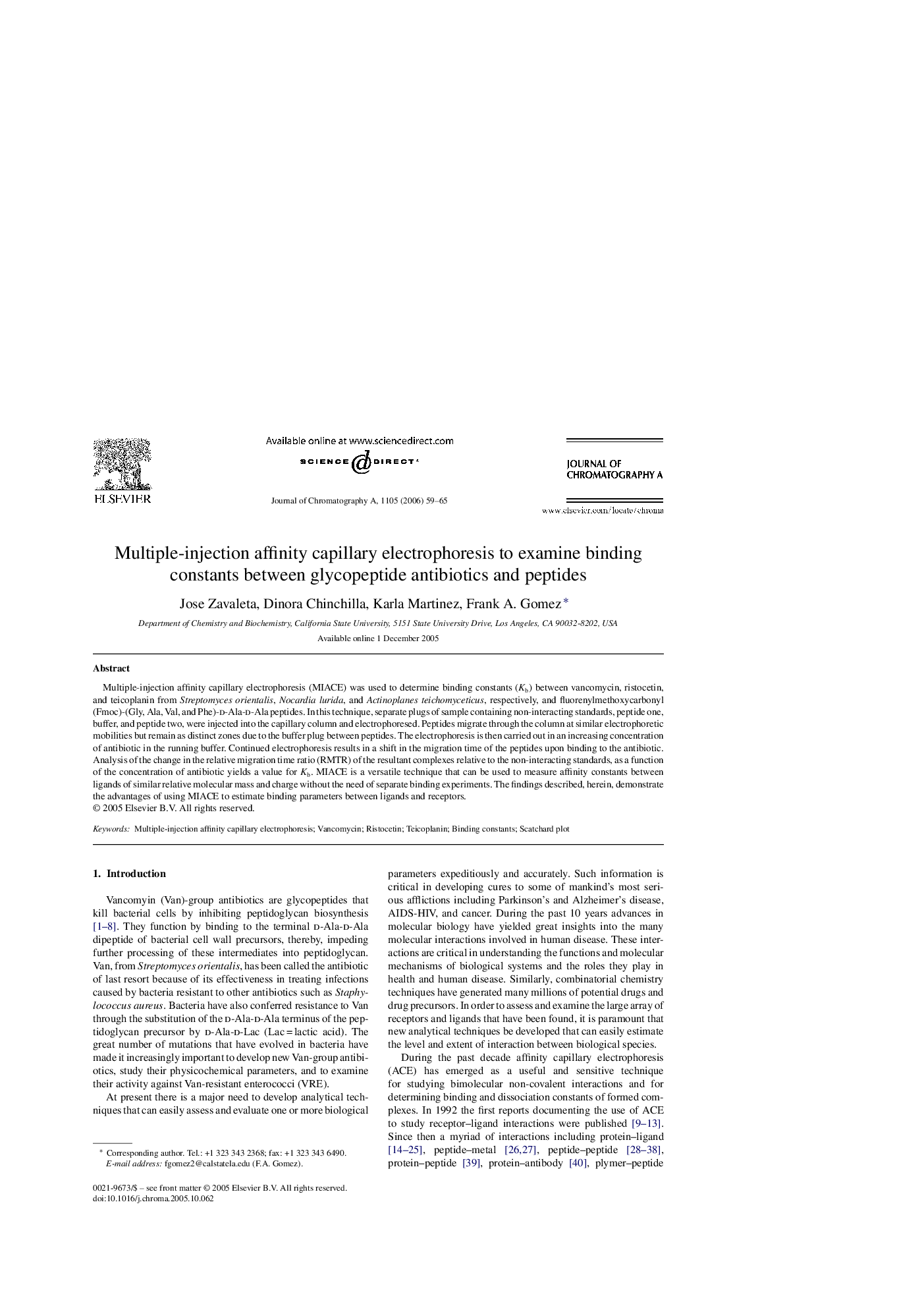| Article ID | Journal | Published Year | Pages | File Type |
|---|---|---|---|---|
| 1210110 | Journal of Chromatography A | 2006 | 7 Pages |
Abstract
Multiple-injection affinity capillary electrophoresis (MIACE) was used to determine binding constants (Kb) between vancomycin, ristocetin, and teicoplanin from Streptomyces orientalis, Nocardia lurida, and Actinoplanes teichomyceticus, respectively, and fluorenylmethoxycarbonyl (Fmoc)-(Gly, Ala, Val, and Phe)-d-Ala-d-Ala peptides. In this technique, separate plugs of sample containing non-interacting standards, peptide one, buffer, and peptide two, were injected into the capillary column and electrophoresed. Peptides migrate through the column at similar electrophoretic mobilities but remain as distinct zones due to the buffer plug between peptides. The electrophoresis is then carried out in an increasing concentration of antibiotic in the running buffer. Continued electrophoresis results in a shift in the migration time of the peptides upon binding to the antibiotic. Analysis of the change in the relative migration time ratio (RMTR) of the resultant complexes relative to the non-interacting standards, as a function of the concentration of antibiotic yields a value for Kb. MIACE is a versatile technique that can be used to measure affinity constants between ligands of similar relative molecular mass and charge without the need of separate binding experiments. The findings described, herein, demonstrate the advantages of using MIACE to estimate binding parameters between ligands and receptors.
Related Topics
Physical Sciences and Engineering
Chemistry
Analytical Chemistry
Authors
Jose Zavaleta, Dinora Chinchilla, Karla Martinez, Frank A. Gomez,
